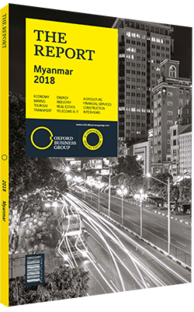U Than Myint, Minister of Commerce: Interview

Interview: U Than Myint
What impact do you foresee the National Export Strategy (NES) having on the trade deficit?
THAN MYINT: The NES will effectively support the main objectives of the nation, namely poverty alleviation, rural development, broad-based income growth and sustainable export-led growth. The Ministry of Commerce (MoC) has been developing the NES in cooperation with the International Trade Centre and various relevant public and private stakeholders, with financial support from the German development organisation GIZ since 2013.
The main objectives of the policy are to increase the competitiveness of our economy by addressing four major issues: supply side, business environment, market-entry barriers and other developmental aspects. The NES aims to simultaneously develop seven priority sectors which offer the greatest potential for rapid export growth and four cross-cutting service sectors. The seven priority sectors are rice, beans and pulses, oil seed crops, fish and crustaceans, textiles and garments, wood-based products, rubber and tourism.
The development of these sectors should be supported by stronger trade financing, information, promotion and facilitation, and better logistics. The plan of action for each sector has been prepared and there is a list of policy actions considered very important for successful implementation. Among these, the government wants to guarantee fund availability to roll out the strategy with the support of the private sector and domestic and foreign investors. The Myanmar Trade Promotion Organisation will be the focal organisation for the implementation of the NES.
How have foreign firms responded to the liberalisation of trade in agricultural products, hospital equipment and construction materials?
THAN MYINT: The liberalisation process aims at supporting the development of agriculture, public health care and infrastructure by creating a more competitive market, with lower prices and high-quality products. Because of this reform, foreign companies have been investing in the trading sector, importing products with high quality standards by applying the best supply chain models and practices. We expect the trade liberalisation move to stimulate investment across the whole agriculture supply chain, from the farm to the final consumer.
How will the government overcome the remaining challenges in aligning the economy with the principles of the ASEAN Economic Community (AEC)?
THAN MYINT: Since 2012 Myanmar has been undergoing changes in its economic structure. Following the political transition in July 2016, the government launched the 12-point economic policy objectives, which will guide economic reforms and priority infrastructure investments, all of which are aligned with the administration’s chief objective of national reconciliation. The policy objectives will bring to fruition the government’s plans to promote linkage between the agriculture sector and the rest of the economy by providing a level playing field for talented entrepreneurs while ensuring inclusive growth for citizens. The trade development agenda is well aligned with the 12-point economic policy objectives, and the country’s participation in the Aid for Trade initiative serves as an example of the ways in which Myanmar is engaged with the international community and foreign donors.
Furthermore, seven national and sectoral trade-related development plans have been launched by the administration to accelerate trade integration at the regional, global and multilateral levels. As a member of ASEAN, Myanmar is also diligently working on the implementation of the AEC Work Plan. The MoC is currently engaging with the private sector to promote the manufacturing of products which meet ASEAN market standards, as well as encouraging said private players to get more involved in the trade sector itself.
You have reached the limit of premium articles you can view for free.
Choose from the options below to purchase print or digital editions of our Reports. You can also purchase a website subscription giving you unlimited access to all of our Reports online for 12 months.
If you have already purchased this Report or have a website subscription, please login to continue.

